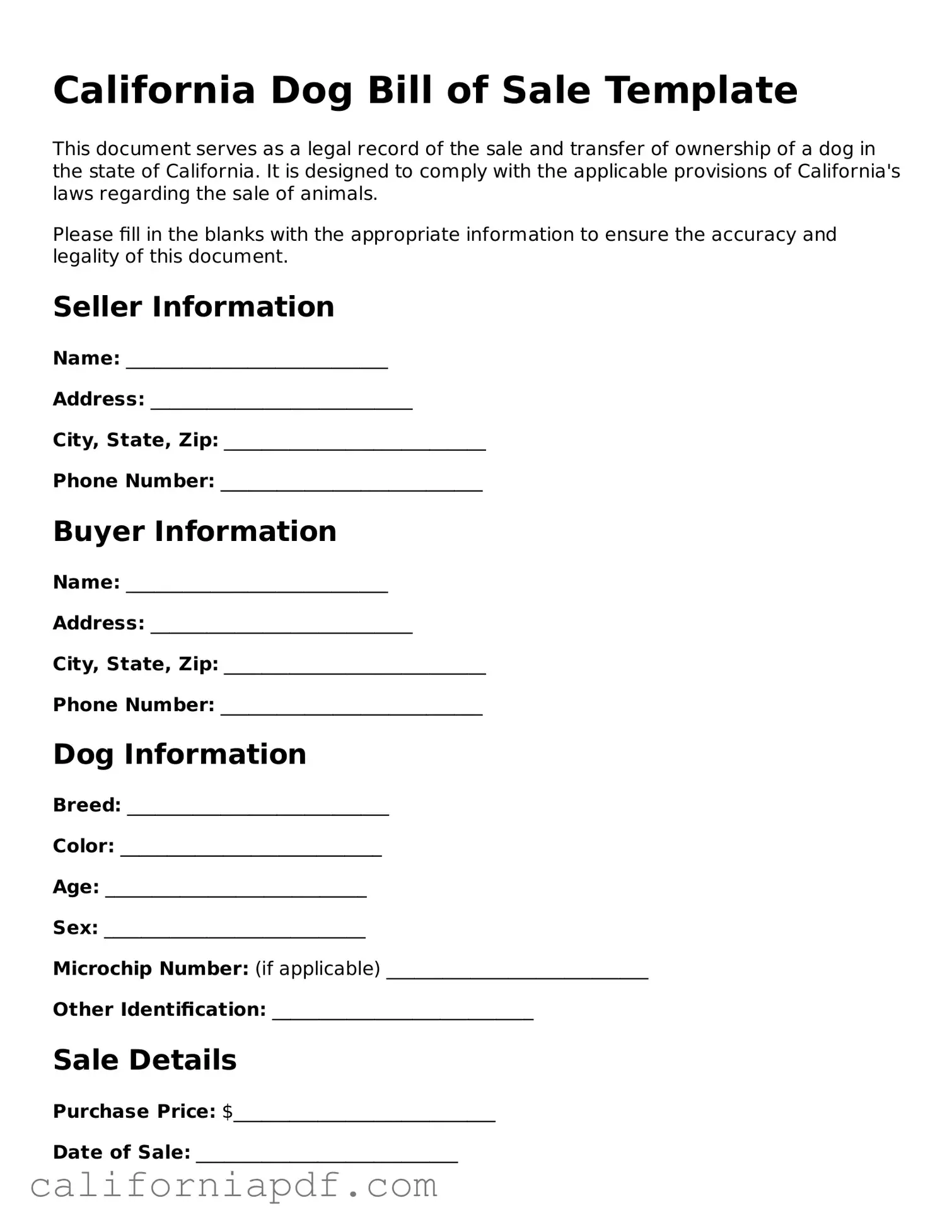California Dog Bill of Sale Template
This document serves as a legal record of the sale and transfer of ownership of a dog in the state of California. It is designed to comply with the applicable provisions of California's laws regarding the sale of animals.
Please fill in the blanks with the appropriate information to ensure the accuracy and legality of this document.
Seller Information
Name: ____________________________
Address: ____________________________
City, State, Zip: ____________________________
Phone Number: ____________________________
Buyer Information
Name: ____________________________
Address: ____________________________
City, State, Zip: ____________________________
Phone Number: ____________________________
Dog Information
Breed: ____________________________
Color: ____________________________
Age: ____________________________
Sex: ____________________________
Microchip Number: (if applicable) ____________________________
Other Identification: ____________________________
Sale Details
Purchase Price: $____________________________
Date of Sale: ____________________________
Additional Terms: ____________________________
Signatures
This document, once signed by both the seller and the buyer, becomes a binding agreement concerning the sale and transfer of the dog described herein.
Seller's Signature: ____________________________ Date: ____________________________
Buyer's Signature: ____________________________ Date: ____________________________
Certification
This section is to certify that the information provided in this Bill of Sale is true and accurate to the best of the knowledge of both parties involved in the transaction.
